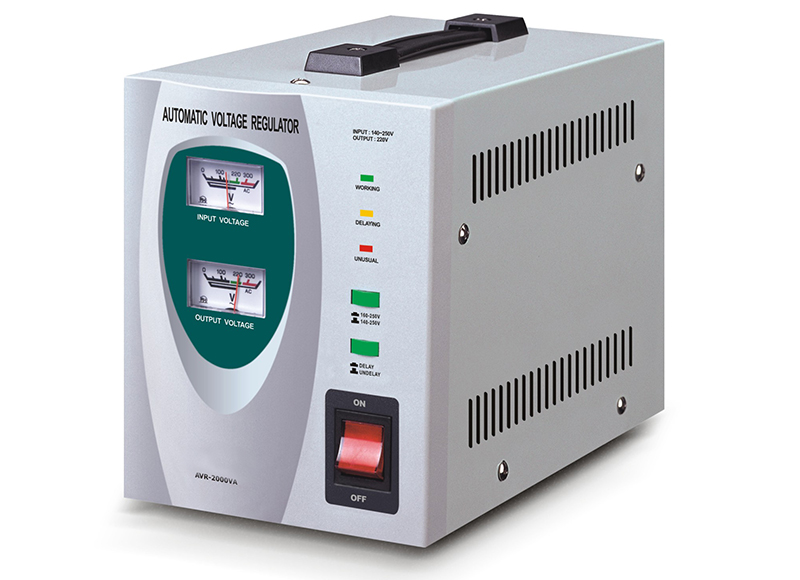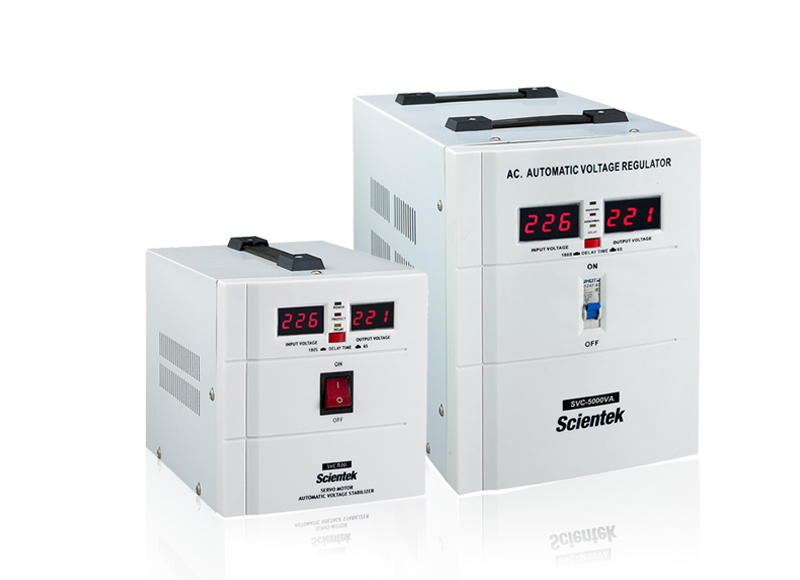Automotive power regulator, also called electronic rectifier, electronic regulator. Most products are expressed as stabilizing the voltage of the car's 12V main power supply circuit, improving the power performance of the car, saving fuel, and even some products are directly named as electronic fuel savers.
The power regulator is composed of a voltage regulating circuit, a control circuit, and a servo motor. When the input voltage or load changes, the control circuit samples, compares, and amplifies, and then drives the servo motor to rotate to change the position of the carbon brush of the regulator , By automatically adjusting the coil turns ratio, the output voltage is kept stable. The AC voltage stabilizer with larger capacity also works with the principle of voltage compensation.
The power supply for the car is battery and generator. Before the car is started, it is powered by the battery with a voltage between 12.0 and 12.6V; after the car is started, the generator is powered by the engine, and the power supply voltage is between 13.3 and 14.8V. The voltage varies depending on the vehicle model and the working state of the vehicle.
The battery power supply mainly guarantees the basic circuit power supply function when the car is not started, such as: ECU and instrument panel power supply, lighting, etc., and also provides protection for starting the engine.

After the engine is started, the generator is put into operation. Because its output voltage is higher than the maximum voltage of the battery, the battery that was originally in the power supply state turns to the charged state, and the power supply circuit of the car is guaranteed by the generator. The working conditions of the engine include: idling, shifting, accelerating, decelerating, and cruising, as well as irregular short-term load of automobile air conditioners. These will affect the engine, resulting in changes in speed and fluctuations in the corresponding generator speed.
Unlike the battery, the generator has no power reserve, and its power is instantaneously converted from the kinetic energy of the engine; therefore, any load change in the circuit, regardless of the magnitude of the change and the length of time, must be responded to and borne by the generator. The lag of the generator's power supply response will cause voltage fluctuations, which will make the vehicle's power and handling performance worse.
When the generator is supplying power, because there is no power reserve, the voltage is always fluctuating. The greater the range of the engine's working state, the more severe the voltage fluctuation. This will affect the stability and reliability of the car's work, and will also reduce the reliability of the engine's ignition and the accuracy of the fuel injection volume, thereby affecting the driving performance and overall performance of the car. In particular, some small-displacement and large-body styles will be more obvious, usually manifested as slow start, lagging acceleration, and the accelerator pedal cannot reach the speed.
The original automobile factory is provided by a number of supporting factories to provide component assembly. Therefore, various circuit systems, such as: ignition system, ECU system, instrument system, ABS system, etc., all have a wider applicable voltage range on this system, and there is no overall stability. Pressure consideration.

After the car is powered by the generator, each system can adapt to its own system, regardless of other electronic control systems; therefore, due to the poor stability of the power supply voltage due to the change of the engine speed, it is necessary to equip a voltage stabilizer with a certain power storage capacity in the overall circuit In order to ensure the stable power supply of the whole vehicle, and improve the overall stability and reliability of the various electronic systems of the whole vehicle.
1. When the electrical equipment is not used for a long time, please turn off the power switch of the electrical equipment to reduce power consumption and extend the service life of the voltage stabilizer.
2. The wire connected to the voltage stabilizer should have enough load surface to prevent heat generation and reduce voltage drop. Voltage stabilizers with a capacity of 2KVA or more are connected by terminals, a single copper wire should be used, and the terminal screws should be tightened as much as possible to prevent heat generation at the connection.
3. The voltage stabilizer must not be overloaded. When the mains voltage is low, the output capacity is reduced, and the load of the regulator should be reduced accordingly.
4. Regardless of single-phase or three-phase voltage stabilizer, after connecting all input and output lines, turn off the power switch of the load first, then turn on the voltage stabilizer, and then turn on the power switch of the load after checking that the output voltage is normal.
5. When selecting electrical appliances such as refrigerators, air conditioners, water pumps and other equipment with motors running, a voltage stabilizer with a capacity of more than 3 times should be selected to prevent the equipment starting current from exceeding the voltage stabilizer fuse current or the overcurrent protection circuit breaker current to stabilize the voltage The fuse of the device is blown or the circuit breaker is tripped or the voltage drop is too large to work.